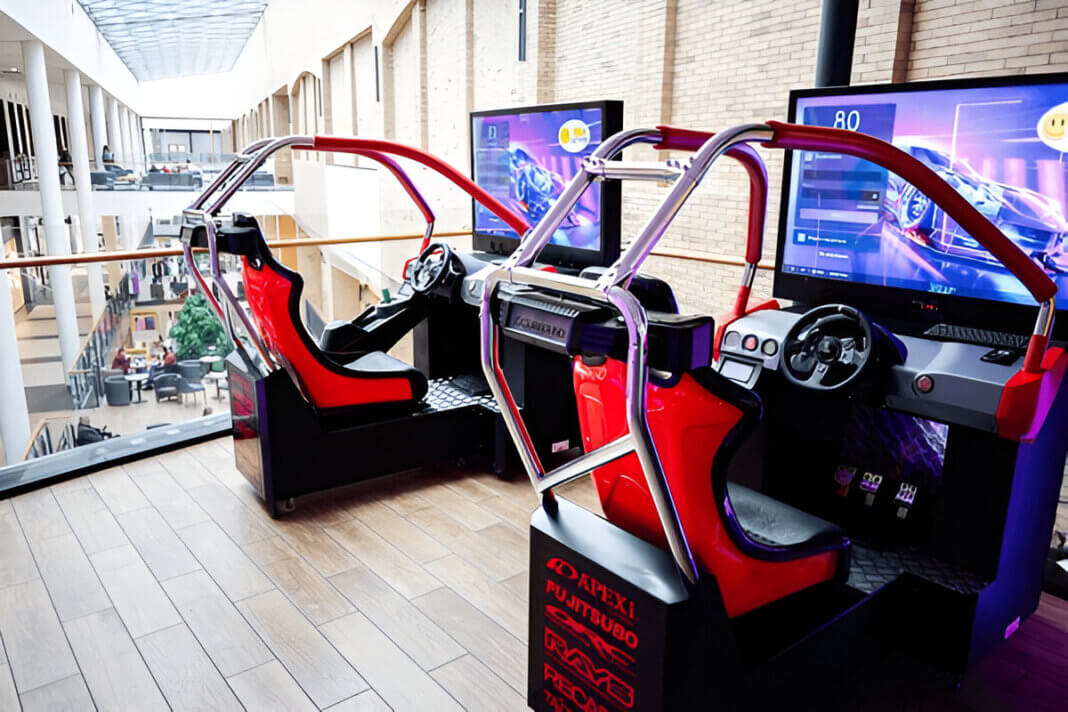Feel the track, not just the throttle. Discover the secret engineering behind Simagic pedals that delivers unparalleled realism. From hydraulic brakes to precise load cells, we break down how these pedals transform your sim rig into an actual racing machine.
In the world of sim racing, most of the spotlight falls on powerful direct-drive wheels and stunning ultra-wide monitors. However, ask any seasoned sim racer, and they’ll tell you that the pedals are arguably the most crucial component for achieving consistency and speed. Think about it: every lap, every corner, every braking point—it all starts with your feet. The ability to modulate the brake with precision, feather the throttle to avoid wheelspin, and smoothly release the clutch is what separates a podium finish from a crash. The proper set of pedals provides the feedback and control needed to master these subtle inputs. This is where high-quality peripherals like Simagic Pedals come into play, meticulously engineered to replicate the feel of a real race car.
The Core of Realism: Load Cells and Hydraulics
The most significant leap in sim pedal technology has been the move away from simple potentiometers (which measure pedal travel) to more advanced systems that measure force. This is the fundamental difference between feeling how far you’ve pressed the pedal and feeling how hard you’ve pressed it, just as you would in a real car.
Load Cell Technology: The Foundation of Feel
At the heart of many high-end pedals, including those from Simagic, is the load cell. Unlike a potentiometer, which measures the distance of the pedal’s travel, a load cell measures the force being applied. This is critical for braking. In a real car, the brake pedal doesn’t travel far; instead, the driver applies varying levels of force to control the brake pressure.
-
How it works: A load cell is a transducer that converts force into an electrical signal. When you press the brake pedal, the force compresses the load cell, which changes its electrical resistance. This change is then read by the software and translated into brake pressure in the game.
-
Benefits: This design allows for muscle memory development. Instead of learning to press the pedal a certain distance for a specific braking force, you learn to apply a certain amount of pressure. This is a much more natural and transferable skill, making the transition from a sim rig to a real track far more seamless.
The Hydraulic Advantage: Simulating a Real Brake System
While load cells provide the foundation of force measurement, Simagic takes it a step further with hydraulic systems on its high-end models. These systems mimic the feel of a real-world brake master cylinder, offering an incredible level of realism.
-
Mimicking fluid pressure: The hydraulic piston, often paired with a rubber or elastomer spring stack, creates a progressive resistance curve. Initially, the pedal is relatively easy to press, but as you apply more force, it stiffens up, just like a real brake pedal as the fluid pressure builds.
-
The feeling of “bite”: This progressive resistance allows drivers to find the exact point where the brakes “bite,” providing critical tactile feedback for trail braking—the art of smoothly transitioning from hard braking to a turn-in. This sensation is impossible to replicate with a simple spring or potentiometer-based pedal.
Pedal Adjustability: A Key to Personalisation
One size does not fit all in sim racing. The ergonomics and feel of the pedals must be customizable to match a driver’s preference, driving style, and even their body type. Simagic pedals excel in this area, offering a wide range of adjustability.
Mechanical Adjustments
-
Pedal face position: You can typically move the pedal faces horizontally to create a more comfortable spacing between the throttle, brake, and clutch.
-
Pedal angle: Adjusting the angle of the pedals relative to the base plate allows you to fine-tune the ergonomics and mimic the feel of different cars, from a formula car with upright pedals to a GT car with more laid-back pedals.
-
Travel and stiffness: Through interchangeable elastomers and springs, drivers can modify the pedal travel and the resistance curve, from a soft, long-travel feel to a stiff, short-travel feel, perfectly matching their preference.
Software Adjustments
-
Calibration: Simagic’s software allows for precise calibration of the pedals, setting dead zones and sensitivity curves to eliminate any input jitter and ensure a smooth response.
-
Force curves: Some advanced software allows you to create custom force curves, further fine-tuning the feel beyond the mechanical adjustments.
The Art of Precision: Throttle and Clutch Engineering
While the brake pedal receives significant attention, the throttle and clutch pedals are just as crucial for a complete simulation experience.
The Throttle: Linear and Responsive
A good throttle pedal needs to be linear and predictable. Simagic’s throttle pedals often use a magnetic Hall-effect sensor. This technology is superior to potentiometers because it’s contactless, meaning there are no moving parts to wear out. It provides a smooth, precise signal that translates into perfect control over acceleration.
The Clutch: Finding the Bite Point
The clutch pedal is crucial for manual transmission cars, and a realistic clutch simulation requires more than just an on/off switch. Simagic’s clutches are engineered to provide a progressive feel, allowing drivers to find the “bite point accurately”—the precise point where the clutch begins to engage. This feedback is essential for smooth starts and perfect gear changes.
-
Clutch feel: The clutch pedal’s resistance often increases as it approaches the bite point and then decreases, mimicking the feel of a genuine clutch engaging and disengaging.
-
Benefits: This tactile feedback allows for perfect rev-matching and clutch dumps, adding another layer of authenticity and skill to the simulation.
Summary
Sim racing has evolved from a simple video game to a serious training tool for professionals and a deeply engaging hobby for enthusiasts. The peripherals we use are at the forefront of this evolution, and none are more critical for consistency and realism than the pedals. Simagic pedals stand out because of their commitment to engineering excellence, combining robust load cell technology, advanced hydraulic systems, and extensive adjustability. By focusing on replicating the subtle feedback and force that drivers experience in a real race car, they provide an unparalleled level of immersion and control. For anyone serious about improving their lap times and truly feeling the sensation of driving, investing in a high-quality set of pedals is the most impactful upgrade you can make. It’s not just about what you see on the screen, but what you feel through your feet.








